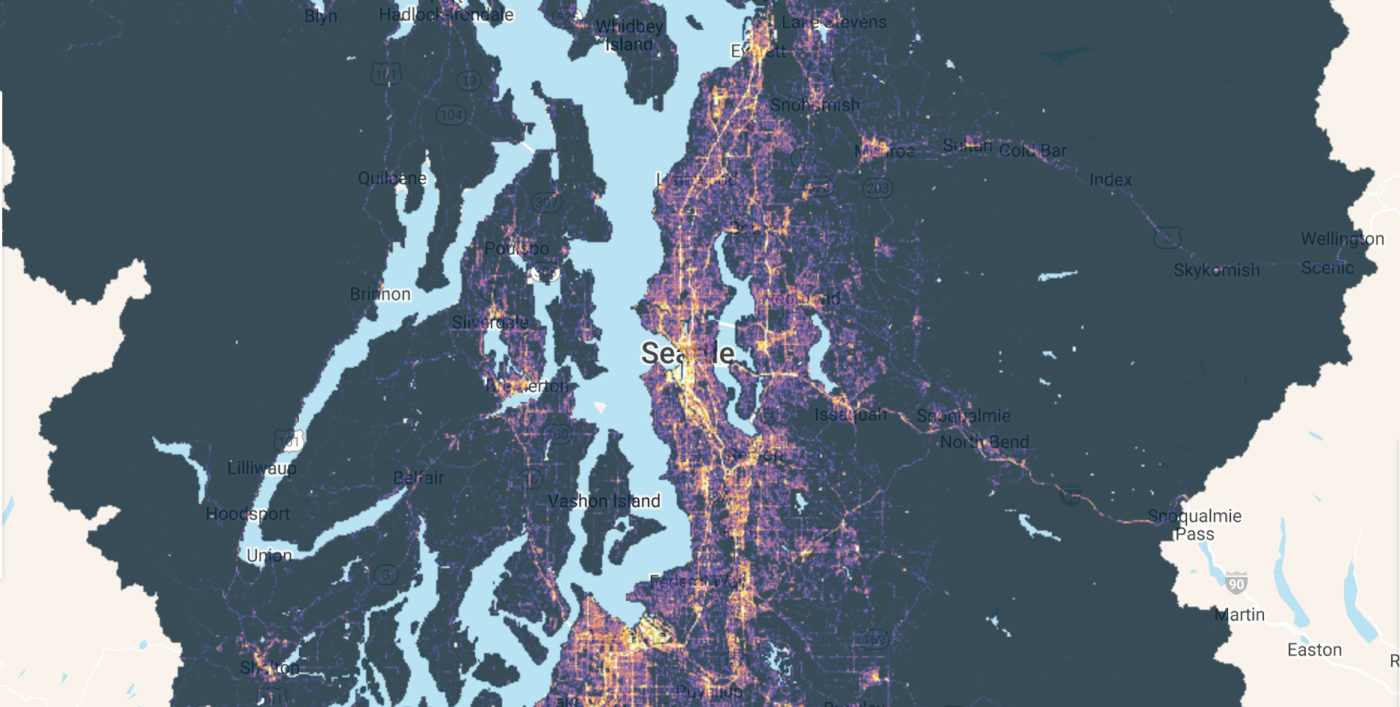Our stormwater community welcomes a new mapping tool, the Puget Sound Stormwater Heatmap, which can help users identify hotspots where stormwater pollution is generated. This will help stormwater managers decide where pollution interventions should be made to address the most contaminated parts of our landscape. This tool is a collaborative effort between The Nature Conservancy, Geosyntec Consultants, Cheva Consulting, and other partners.
We already know that potential mitigating actions including bioretention, rain gardens, and other forms of distributed green infrastructure including riparian forest retention, protection, and planting can be used to clean up some of the most ubiquitous pollutants like organics, heavy metals, and total suspended solids. With the Stormwater Heatmap, we can know where the places are for these facilities.
This tool can be used in conjunction with the Puget Sound Watershed Characterization tool and the High-Resolution Change Detection Tool, both of which identify areas to protect and provide a context of rates and location of landscape changes. These and other tools will help users to focus on geographies that are important fish migration corridors, including areas targeted for fish passage improvement projects. The Stormwater Heatmap is one of the potential information sources that could be used to prioritize transportation system retrofits to address 6PPD-quinone.
This tool can also help users prioritize scarce resources; bring light to pollution sources; and frame discussions regarding the location of transportation routes and their relationship to hydrology and pollution. The Map could also identify priority locations where maintenance, road improvements such as right-of-way bioretention, and other stormwater management activities should take place.
In related news, The Nature Conservancy recently released a video about opportunities associated with mitigation of highway runoff from the Aurora Bridge in Seattle. The Washington Stormwater Center, through its Stormwater Initiative Lead Team (SIL) work, is an active collaborator in supporting these projects through its work to identify and accelerate the pace of stormwater retrofit projects.
Salmon Safe, referenced in the video, was funded in part by the Stormwater SIL and with TNC, and other non-profits, is an important partner in our pathway towards Puget Sound resilience.



